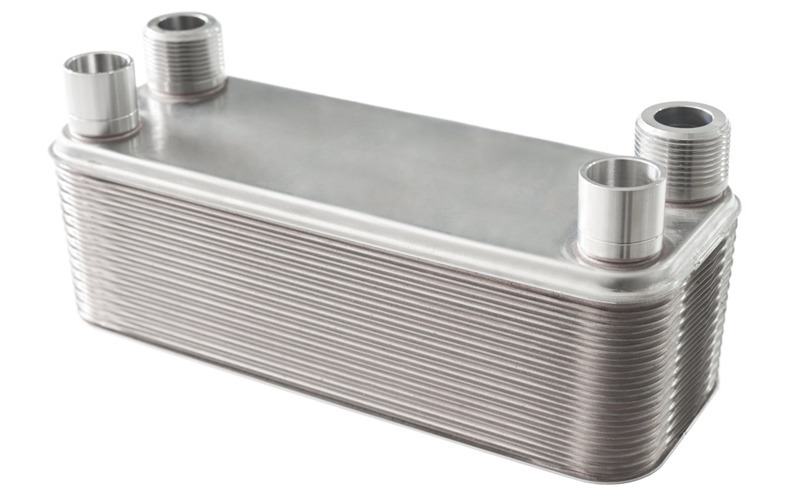Plate-type heat exchangers are a critical component in industries requiring efficient heat transfer, such as HVAC systems, food processing, and chemical production. Their design involves stacking multiple thin, corrugated plates, allows heat transfer between two fluids while keeping them separate. This compact, highly efficient system makes plate heat exchangers an attractive option for a wide range of applications.
 Plate heat exchangers are made up of thin metal plates, usually stainless steel, arranged within a frame. Each plate features channels that direct fluid flow in alternate patterns, with hot and cold fluids passing through every other plate. This configuration maximizes the surface area for heat transfer, allowing for higher efficiency compared to other types of heat exchangers, such as shell-and-tube systems. Gaskets or welding are used to seal the plates, ensuring that check out the post right here fluids remain separated while exchanging thermal energy.
Plate heat exchangers are made up of thin metal plates, usually stainless steel, arranged within a frame. Each plate features channels that direct fluid flow in alternate patterns, with hot and cold fluids passing through every other plate. This configuration maximizes the surface area for heat transfer, allowing for higher efficiency compared to other types of heat exchangers, such as shell-and-tube systems. Gaskets or welding are used to seal the plates, ensuring that check out the post right here fluids remain separated while exchanging thermal energy.
A key advantage of plate heat exchangers is their compact design. They provide high heat transfer efficiency in a smaller size, making them ideal for installations with limited space. Additionally, they are modular, allowing for capacity adjustments by adding or removing plates, giving flexibility in meeting specific heat transfer requirements.
Various types of plate heat exchangers are available. Gasketed plate heat exchangers use gaskets for sealing, making maintenance and cleaning straightforward. Brazed plate heat exchangers feature permanently bonded plates, providing durability and leak resistance for high-pressure and high-temperature uses. Welded plate heat exchangers provide similar durability but allow for greater resistance to corrosive fluids.
Plate heat exchangers are widely used in HVAC systems for heating and cooling air, in food processing for pasteurization, and in chemical plants for temperature regulation. Their efficient heat transfer between fluids with varying viscosities, pressures, and temperatures makes them suitable for diverse industries.
To summarize, plate heat exchangers provide efficient heat transfer, a compact design, and versatility, making them a popular choice across many industrial applications. Their customizable nature allows them to meet specific needs, ensuring optimal performance.
